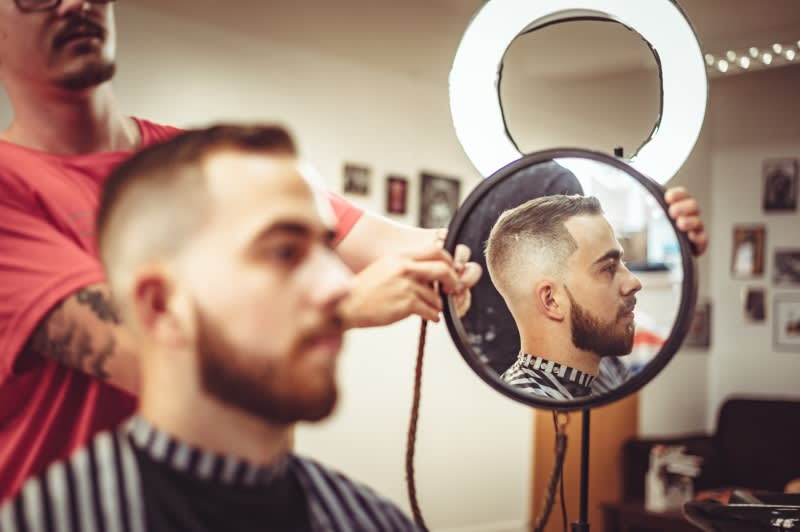Which Hair Restoration Option is Right For Me?

By the age of 50, about 85 percent of all men will experience “significantly thinning” hair.
Fortunately, there’s some good news for people who may be catching those extra hairs on their pillow in the morning: today, there are several ways to treat hair loss, including hair transplants. This is an excellent option for men dealing with long-term hair loss, and now, there are a few different options available, including an FUT or FUE hair transplant.
What are the different types of hair restoration?
FUE, FUT, PRP, lasers, and stem cells — the sheer abundance of hair restoration techniques is a little overwhelming to digest. What are the differences? How do you know which one is right for you?
Hair transplantation is widely considered one of the most reliable forms of hair restoration — the one that will give you back that full head of hair. Let’s take a look at some of the most common techniques:
Follicular Unit Transplantation (FUT) FUT is a technique that involves removing a strip of tissue containing hair follicles from the donor site. Then, your surgical team will make small incisions in the places where the hair loss is occurring, and the tissue is transplanted onto these areas. The method often has reasonable results, although it leaves a visible scar and recovery time can be extensive.
Follicular Unit Extraction (FUE) FUE is similar to FUT, but the technique is somewhat newer and attempts to address concerns about the old technique. With FUE, your doctor will harvest individual strong, healthy hair follicles and implant them to thinning sections of the scalp to create natural-looking results. In contrast to FUT, you will not need to have a strip of tissue removed from your head or require stitches, making it a less painful recovery process with no linear scarring.
PRP Platelet-rich plasma (PRP) injections are used to treat a range of conditions, including hair loss. The process starts by drawing blood from the patient, typically from the arm. That blood is then run through a centrifuge to extract the PRP, or platelet-rich plasma (the liquid part of blood). The plasma is then injected into various areas of the scalp to promote healthier hair.
Laser Hats, Helmets, and Combs Laser-based devices, including hats, helmets, and combs, have been touted as another means of promoting hair growth. Essentially, they shoot low-level LED lasers at your scalp, specifically aimed at your hair follicles to boost blood circulation and decrease inflammation.
Stem Cell Hair Transplants Like a traditional hair transplant, a stem cell hair transplant involves harvesting substances and implanting them onto the area where you want regrowth to occur. However, instead of hairs, skin samples are harvested and implanted on your scalp to stimulate growth.
How do I figure out which hair restoration option is best for me?
The best course of action really depends on your personal situation. That said, many people are excellent candidates for hair restoration procedures.
Why hair restoration vs. finasteride + minoxidil?
Gone are the days of synthetic-looking hair plugs. Today, people have several options when it comes to achieving natural-looking and feeling hair. Two of the major options are hair transplants and medications.
Finasteride and minoxidil offer safe treatment options for curbing hair loss. They’re far less invasive than hair restoration, which is a surgical option. For people with early-stage or mild hair loss, they can be highly effective — not to mention convenient.
But for those with more substantial hair loss, it’s unlikely that these treatments will give you maximum density. That’s because medications, even relatively strong ones like finasteride and minoxidil, slow, halt, and, in some cases, reverse hair loss — but only by stimulating hair follicles that are still functioning. Follicles that have already stopped growing hair will be unaffected, meaning your scalp cannot regrow hair in these places.
For people with more severe cases who want a fuller head of hair, hair transplant surgery is usually a better course of action. The results will not only be more apparent, but the treatment also tends to be more permanent. That said, you will still benefit from these medications which help to hold on to your native hair while protecting the transplanted grafts.
The bottom line
FUE is largely considered the best choice since it eliminates the linear scar that’s associated with FUT and generally produces superior results with minimal recovery time. However, it’s also important to weigh the pros and cons when deciding what’s best for you.
In all of these different hair restoration procedures, most patients report seeing natural-looking hair and are generally satisfied with the results. Still, it’s important to talk to your doctor about your options and determine the best treatment path for you.
The information provided in this article is not a substitute for professional medical advice, diagnosis, or treatment. You should not rely upon the content provided in this article for specific medical advice. If you have any questions or concerns, please talk to your doctor.
If you would like to learn more about finasteride, please see the full prescription information here. You are encouraged to report negative side effects of prescription drugs to the FDA. Visit MedWatch: https://www.fda.gov/Safety/MedWatch/default.htm or call 1-800-FDA-1088